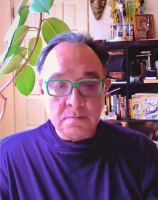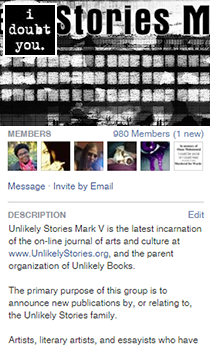Two Perspectives on Black Resistance in America
Jazz and Naturalism
The Harlem renaissance established parameters for cultural expression in the lives of Black Americans. The development and proliferation of jazz set the standard for these models of ascendancy and resistance. The very nature of jazz music — characterized by improvisation, syncopation, and an often-passionate focus on rhythm — served to deconstruct and reorder the nature of the meaning of music to American listeners while also providing its creators and practitioners with a keen measure of resistance against the status quo.
The period following the war saw increased resistance, and consequently, the further development of the use of other media, including literature, to explore the themes of alienation, resistance and liberation that had and have continued to be expressed in jazz music. This literature often took on an intimate form of naturalism that further revealed the beauty and triumph of the Black spirit in America.
Together, these two artistic mediums represent the creation an embodiment of a new, yet aspirational world wherein the cultural challenges faced by Black Americans was balanced by the complexity of both individual and collective experience. The result was a clear vision and directionality that presaged the civil rights movement of the 1960s and the cultural revolution that followed.
The emergence of jazz in the early twentieth century signaled a cultural triumph. In many ways, jazz music symbolizes the rise of Black culture in America in the face of overwhelming odds, after centuries of subjugation and oppression. Even as this event happened in real time, Black artists and musicians faced scorn and further attempts at oppression by the status quo. They even faced complex criticism from within their own ranks about the nature and direction of their work during the Harlem Renaissance and beyond.
White American journalist Mike Judge strikes an antithetical, contrary tone to that expressed in Ken Burn’s documentary series Jazz. Burns puts credence behind the idea that jazz represents the cultural ascendancy of Black culture and identity in early modern America. But Judge is critical of the entire process that separates Black art from White art in popular culture. He expresses disdain for the vision of the music evoked in Burn’s Jazz documentary series. His words are sharp, immediately calling the series “another race-obsessed orgy of political correctness” (Judge). He refers to George S. Schuyler’s combative essay “The Negro Art-Hokum” as proof there was never a division to begin with and implies that many Black intellectuals shared that belief. Interestingly, Judge blames jazz’s reduced popularity in pop culture on its postmodern switch to harmony. People prefer melody, he concludes, and skin color was just not a factor, especially considering the effete cultural positioning of artists like Duke Ellington and Miles Davis (Judge).
Judge’s point is that Burn’s documentary series panders to the same stereotypes and unnecessary divisions and conclusions objected to by the likes of Shuyler in the 1920s and embraced by White liberals intent on highlighting cultural and racial divisions nearly a century later.
The question here, then, is: Does jazz provide solid evidence of the development of a dignified and distinct identity for post-Civil War Black Americans, or as Schuyler and Judge suggest, should the genre (and art in general) ideally be considered as a singular but ultimately universal human endeavor, even if affected by local, regional or psychogeographic cultural influences? Is Judge’s statement, “…blacks today can’t be just plain Americans, at least according to a certain elite way of thinking” (Judge) out of step with what we’ve learned about the history of patriarchal oppression or is it a credible reflection of certain conservative cultural forces that insist the worst is over?
Judge and Schuyler do have a point, and Schuyler’s observation that, “As for the literature, painting, and sculpture of Aframericans—such as there is—it is identical in kind with the literature, painting, and sculpture of white Americans: that is, it shows more or less evidence of European influence,” (Schuyler, 1) is apt given the visual trajectory of Modernism that begins with Manet’s appropriation of Japanese art and continues through Picasso’s similar fascination with African masks and sculpture. Even the work of painter Aaron Douglas shows evidence of European influence given that model.
But for what some may consider revisionist reasons, such arguments just don’t hold up in light of what history reveals about the patriarchy. Theirs is the failure to examine the phenomenon of “The Negro Art-Hokum,” jazz music or Black art as a set of revolutionary cultural statements, a phenomenon that exists outside the epistemological framework of what is considered normative in European or American modernism.
As African American specialist Professor Finnie Coleman at the University of New Mexico has often noted, laws were enacted during the time of the Harlem Renaissance to “suppress Black voices and restrict the rights of African Americans to critique racial inequality and segregation.” The fact that such laws were not isolated constructs but rather part of an ongoing, centuries-long process of cultural subjugation and destruction leads this student to come to a stark but strong conclusion. Revolution was the necessary outcome, and as such, its form had to be radically different from what had been produced by those engaged with the dominant paradigm. Because of this, it is useful to look at the Harlem Renaissance as a revelatory event, apart from the “… literature, painting, and sculpture of white Americans” (Schuyler). As Alain Locke notes in “Enter the New Negro,” an article from the March 1925 issue of Survey Graphic, “The Sociologist, The Philanthropist, the Race-leader are not unaware of the New Negro, but they are at a loss to account for him. He simply cannot be swathed in their formulae. For the younger generation is vibrant with a new psychology; the new spirit is awake in the masses, and under the very eyes of the professional observers is transforming what has been a perennial problem into the progressive phases of contemporary Negro life.” (Locke).
In an ideal world, all art created by humans — who are intrinsically equal — therefore should not be separated or critiqued using gender or cultural affiliation as a guide. But that’s just not realistic, given the history of the Western world. Resistance to the dominant paradigm is an essential part of the search for an authentic personal and cultural identity for any group of people which has been systematically oppressed and suppressed.
Sadly, Schuyler’s essay reads more like wishful thinking (at best) and total cultural indoctrination into the capitalist maelstrom (at worst). Here is an example of that contention: “Again, the Africamerican is subject to the same economic and social forces that mold the actions and thoughts of the white Americans. He is not living in a different world as some whites and a few Negroes would have us believe.” (Schuyler, 2)
Judge is also living in a fantasy world, one wherein the truths of history are still to be uncovered, a parallel universe where we are all American. This attitude is based on his position as a privileged White man whose “golly-gee-willikers” attitude and distrust of “liberals” rises above the rest of his literary motivations.
Jazz is revolutionary though, a revelation made mythic in its proportions by the performers and artists who participated. In Ken Burns’s documentary film series on the subject, the director makes his revelatory stance quite clear. This is especially true in Episode Two, “The Gift.” While describing the jazz musicians contemporary with the Harlem Renaissance as each searching for a distinctive voice, he also couches the process in heroic terms, using dynamic editing and historic film footage to help tell the tale of James Reese Europe and the Harlem Hellfighters. This sequence also locates the nascent jazz narrative in Harlem. On the parade to Harlem, Burns says the band was spreading “their hot new music” while big, integrated crowds cheered them on. Similarly, the story of Duke Ellington is handled in almost hagiographic terms. Can the viewer wonder, from such expositions, that such stories are revolutionary in nature? The answer is yes, when Burns quotes influential American record producer and civil rights activist John Hammond in Episode Four, “The True Welcome”: “The very fact that the best jazz players barely made a living, were barred from all playing jobs in radio and in most nightclubs, enraged me. To bring recognition to the Negro’s supremacy in jazz was the most effective and constructive form of social protest that I could think of.”
The case for jazz as a necessary revolutionary art form that is essential to “the creation of a dignified and distinct identity for African Americans” is advanced as the artform evolves, and Burns notes this fact throughout his documentary series Jazz. For example, at the conclusion of Episode Seven, viewers are introduced to the postmodern era with an exploding atom bomb and the strains of [Charlie] Parker’s Band playing “Bird Gets the Worm” working together to create a vision of the future that is both uncertain and compellingly revolutionary in nature.

Rudolfo Carrillo is a writer/artist living in Albuquerque, New Mexico. Carrillo holds a BFA from the University of New Mexico and is currently a graduate student in the UNM English Department. His art work has appeared at 6o6 Gallery, Raw Space, and the ASA Gallery; his literary work has been featured in Typo Mag, On Barcelona, and Maverick Magazine; his work as a journalist has appeared in many regional publications. Carrillo was the news/music editor at Weekly Alibi – where he wrote as August March. Rudolfo recommends the New Mexico Black Leadership Council.


